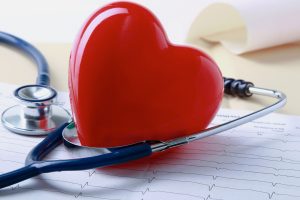If a medical emergency occurred at work, which one of your coworkers would respond? According to a recent American Heart Association (AHA) survey, you might have to search for the right person during an emergency.
The survey results published on April 28 showed that, in general industry, 41 percent of those polled were never trained in first aid, cardiopulmonary resuscitation (CPR), or automated external defibrillators (AED).
However, 90 percent of participants admitted that they would partake in training, if offered by their employers.
Cardiac Arrest, CPR in the Workplace
Of the approximately 220,000 sudden cardiac arrest situations in the United States each year, nearly 10,000 occur in the workplace.
Survival rates drop substantially – down to 5-7 percent – when the victims don’t receive immediate attention, and are forced to wait for emergency medical personnel. According to the AHA survey results, only 62 percent of workers would know how to perform CPR during cardiac arrest, and only 58 believed that their coworkers would be able to do the same.
Furthermore, just 41 percent of those polled felt that they would know what to do if someone needed to use an AED – which increases survival rate up to 60 percent. What’s alarming is that only half of them even knew where to find their workplace AEDs.
With all of those percentages being tossed around, only one thing is for certain: if someone goes into cardiac arrest on a job site, their chances of survival aren’t good unless all employees are properly trained in CPR and AED.
OSHA and First Aid Kits, Training
OSHA standard 29 CFR 1910.151(b) states that “in the absence of an infirmary, clinic, or hospital in near proximity (interpreted as within 3-4 minutes away) to the workplace which is used for the treatment of all injured employees, a person or persons shall be adequately trained to render first aid.”
Additionally, standard 29 CFR 1910.266 App A includes a minimally acceptable number and type of first-aid supplies for workplace first-aid kits.
In 2015 alone, there were 2,905,900 recordable non-fatal injuries and illnesses in private industry, along with 4,836 fatal injuries in all sectors. That information was a partly why the American National Standards Institute (ANSI) updated its voluntary standards for first-aid kits in 2016.
Having first-aid training for all employees is a smart, cost-effective way to offer them peace of mind in emergency situations. It could also save your company thousands … even tens of thousands of dollars in lost productivity and workers compensation payouts.
Develop a Medical Surveillance Plan
The right training and equipment are paramount in workplace safety preparation, but so too are proper medical surveillance programs.
OSHA requires specific medical surveillance, or the analysis of health information to look for problems that may be occurring in the workplace that require targeted prevention, throughout several industries.
Not only do these preventative measures help to preserve workplace compliance, they promote employee health, which, in turn, keeps them productive and onsite. They also keep employers abreast of underlying issues such as heart disease, and whether or not employees are physically able to perform their duties in certain conditions.
Sudden cardiac arrest, just as with any other emergency, is often preventable with proper monitoring.
Eliminate risk in your workplace by being proactive. Are you giving your employees the chance to thrive and survive during emergencies?




